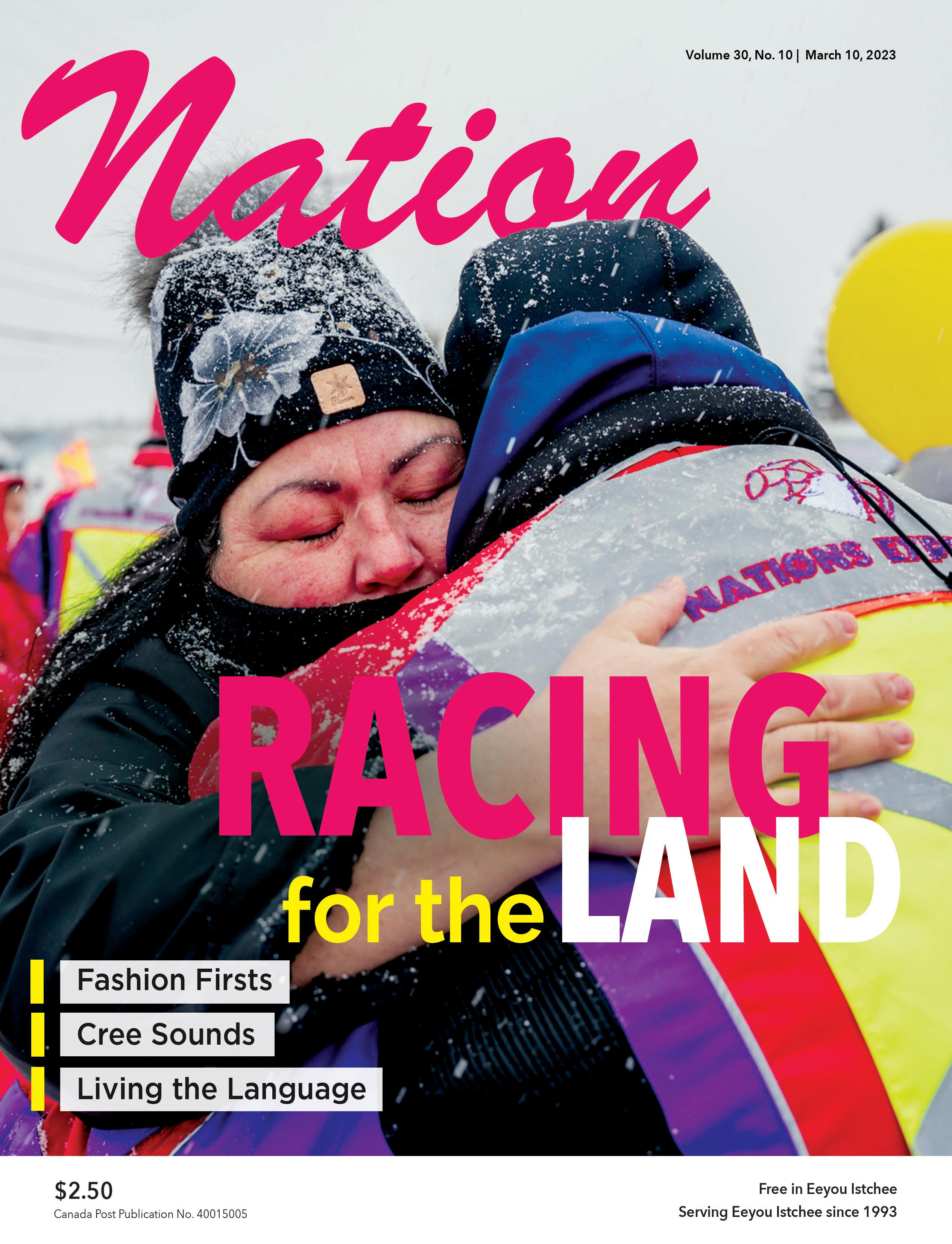
IGNORE VIOLENCE AND YOU’LL SEE THE EFFECTS FOR GENERATIONS. TO STOP THE VIOLENCE, WE MUST FACE IT. AND TALK ABOUT IT.
QUEBEC.CA/INDIGENOUS-RESOURCES-VIOLENCE

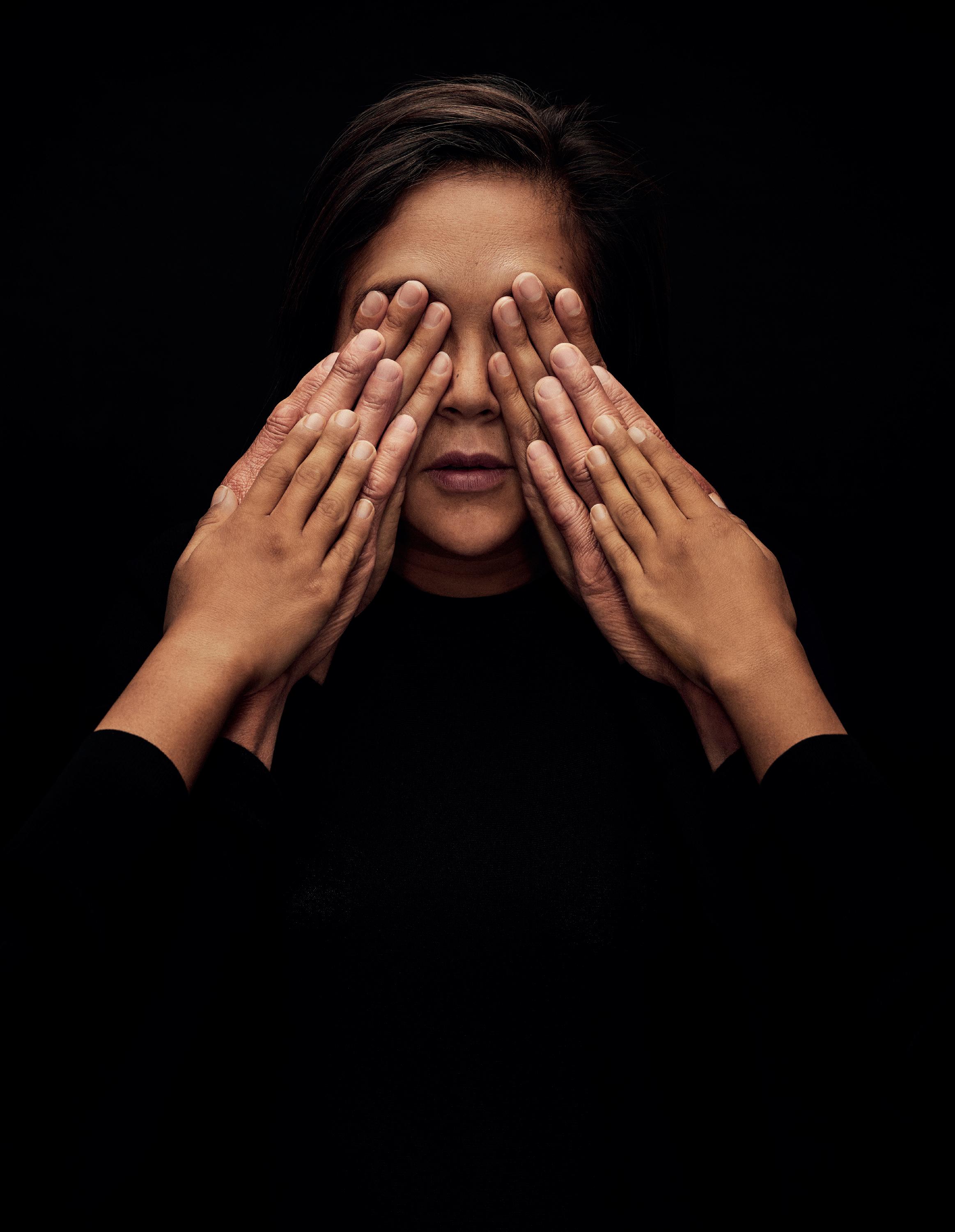
Indigenous Partners:
In partnership with:












IGNORE VIOLENCE AND YOU’LL SEE THE EFFECTS FOR GENERATIONS. TO STOP THE VIOLENCE, WE MUST FACE IT. AND TALK ABOUT IT.
QUEBEC.CA/INDIGENOUS-RESOURCES-VIOLENCE


Indigenous Partners:
In partnership with:










As Charles Dickens wrote, “It was the best of times, it was the worst of times.” It’s getting harder to know what the best consists of these days. One could bet it has nothing to do with the obscene profits being raked in by grocery, petroleum, pharmaceutical and electricity corporations, among others. In the past, businesses that profited from wars would be denounced. Why are these guys being spared the shaming?
Federal and provincial governments engage in their own form of profiteering. For example, look at the way Ontario fails to honour the Robinson treaties signed in 1850. These treaties specified that the annuities paid out to Indigenous residents would increase along with government revenue from natural resources such as logging, mining and other resource exploitation. From an initial annuity of $1.75 per person in 1850, it increased to $4 per person in 1875. In 2023, almost 150 years later, it is still $4 a year.
To many Cree this isn’t an isolated incident of agreements and treaties not being honoured. Remember the Paix des Braves revenue-sharing scheme that promoters promised could be worth billions? Well, the Quebec government never sent us figures to put into that magic formula in the beginning.
In the Robinson treaties case, Nobelprize winning economist Joseph Stiglitz recently testified as an expert witness, saying that Ontario has “short-changed” the First Nations by more than $100 billion. The government replied that it had paid out more than $300 million since 1850 and
that the colonization investment (which included everything from health care, including facilities, railways, roads and the kitchen sink) exceeded any possible increase in the annuity.
Does that mean that Ontarians should get down on their knees and thank First Nations for making their comfortable even lives better? Surely that would be a sight to see, but one that will never happen.
The battle for who’s right and wrong and who owes what is still ongoing as the Anishinaabe case is being appealed to the Supreme Court by the Ontario government after the Anishinaabe won at Appeal Court – even as the judge is still trying to determine what they are owed. The Cree may compare this to the Malouf

Decision in 1974, which the Cree won but then lost in the Quebec Court of Appeal six days later.
It makes one wonder if we can take a legal system to court as for its systematic racism. Oops, we forgot that systematic racism doesn’t exist in Quebec.
We believe that the revenue-sharing formula combined with Quebec’s reported revenue from resource exploitation that has been independently audited be shown year by year since the implementation of the Paix des Braves agreement. After all, we wouldn’t want to have to wait 175 years like the Anishinaabe First Nations to see if the Cree are receiving what they are entitled to.
SUBSCRIPTIONS: $60 plus taxes, US: $90, Abroad: $110, Payable to beesum communications, all rights reserved,
of: The James Bay Cree Communications Society, Circle Of Aboriginal Controlled Publishers, Magazines


Hebdos Sélect Du Québec. Funded [in part] by the Government of Canada. | www.nationnews.ca | facebook.com/NATIONnewsmagazine

The battle for who’s right and wrong and who owes what is still ongoing
 by Ben Powless, Local Journalism Initiative Reporter
by Ben Powless, Local Journalism Initiative Reporter
Cree Language Commissioner Jamie Moses said while there won’t be many activities for this year’s Cree Language Month, there are big plans in place to expand the role and impact of the Commissioner’s office.
Moses said that his office is asking the various Cree communities and organizations launch their own public initiatives for Cree Language Month focused on promoting the language.
“We’re planning to do a signing ceremony in terms of the Cree organizations – the Cree School Board, the Cree Health Board, the Board of Compensation and the Cree Nation Government – to support a five-year funding agreement towards the Office of the Language Commissioner,” Moses said.
He said all the entities have agreed in principle and now just need to make the announcement official to demonstrate their commitment to provide funding for the language. While no dates have been set, Moses said they’d like to host the event in March, if possible.
Additionally, the Commissioner’s office is planning to post job openings in the coming months. “This year we’ll
be more than doubling our team,” Moses added. “Once we have more personnel, we can have more impact.”
Moses said there are many options for Cree entities to advance language protection and promotion goals. He’d like to see a focus on words of the day or week, paying particular attention to “old terminologies” and “pronunciations and meanings of words we don’t hear that often.”
There should also be a focus on acknowledging and promoting language champions in the communities. “There’s different levels of language expertise and language experts – where language is spoken well in Cree, and ones who are more literate in writing and reading Cree,” he explained.
He added that land-users had an expertise of the spoken language that everyone can learn from. “All that time they spend out there, they’re gaining that knowledge of terminology that they use on the land. The everyday language we use isn’t what we use out on the land,” he said.
“Even for some of our expert translators or expert language keepers, that terminology out on the land may be a
challenge for them. They may have more classroom or radio broadcasting expertise, but you have young trappers and hunters out there, who are quietly keeping that vocabulary.”
On canoe and snowshoe trips in the past, Moses would overhear people saying that youth aren’t doing traditional activities anymore. That made him wonder if being away from his family and waking up in minus-40-degree weather to start a fire was worth it.
However, he said it only made him appreciate more the hardships his ancestors endured, and the lessons passed down through the culture and language. Now, he hopes that those young people taking the time to learn and share that knowledge can be celebrated so they know their efforts have been worth it.
Moses hopes land-based programs can help inspire youth living troubled lives to “rediscover themselves” and set them on the right path.
“We all have to be guided sometimes towards the right path, towards healthy choices,” he said. “Sometimes we don’t learn overnight, sometimes we have to do it many times to gain that lesson.”
We’re recruiting a returning officer for Lac-Saint-Jean to help manage Canada’s federal elections. If you’re a people person with management experience and would like to get involved in your community while contributing to democracy, then we’re looking for you! Apply now at elections.ca/jobs

 by Patrick Quinn Local Journalism Initiative Reporter
by Patrick Quinn Local Journalism Initiative Reporter
At this year’s annual Dialogue for Life conference, held at Montreal’s Sheraton Hotel February 14-18, workshop and training organizers shared evolving attitudes and strategies for addressing suicide prevention in Indigenous communities.
“The one-on-one sessions with healers, workshops and training are a source of information but also, they come to recharge,” said new association director Lori May Dubé, who was hired in November. “It’s part of their wellbeing.”
Presented by the First Nation and Inuit Suicide Prevention Association of Quebec and Labrador (FNISPAQL), this year’s theme was mental health in the context of the Covid pandemic, which forced the conference’s cancellation in 2020. As the non-profit association stabilizes, leaders are planning the next edition for its usual time in November.
“It was suggested that there be two conferences per year, possibly one in Quebec City,” shared Dubé. “I’d also like to go see communities. We’re still recuperating from the pandemic and life is costing more – things that have an effect on mental health.”
A Sixties Scoop survivor whose mother is missing or murdered, and whose brother took his own life, Dubé has been a social worker in Montreal’s First Nations community since FNISPAQL’s creation in 2001. With over 300 members across Quebec, the association has grown to encompass an expanding variety of perspectives about mental health.
“I see in the last few years more openness to talk about suicide, a slow destigmatization of mental health and addiction issues,” explained Dubé. “There’s less shame and blaming. The [public inquiry] commissions validated individuals’ journeys with different issues. It’s very positive but shows a need for more funding.”
During the two-day Applied Suicide Intervention Skills Training (ASIST), Kateri Oesterreich and Chad Diabo from Kahnawake Mohawk Nation provided standardized tools for participants to de-escalate moments of crisis so more at-risk individuals remain safe within their communities rather than being taken away for medical treatment.

make the democratic process possible.
“It’s essential you know how to connect them to resources to help them talk about their thoughts of suicide,” said Oesterreich. “Be authentic and non-judgmental. When you understand suicide, you can provide caring insight and support, and that change helps keep them alive.”
In another workshop about lateral violence, Oesterreich and Diabo asked if it’s really the way of Indigenous people. Exploring why teasing sometimes crosses the line into bullying, they suggested that understanding how verbal abuse became normalized in residential schools can help break this cycle in communities.
“I find people are still very defensive,” Oesterreich asserted. “You can’t create change until you’ve acknowledged how your words are rippling out. We’re all guilty of lateral violence but it’s learning to forgive yourself and recognizing that behaviour, so you don’t do it again.”
Other workshops examined the unique challenges faced by those with neural differences like Fetal Alcohol Spectrum Disorder (FASD), an under-diagnosed disability believed to affect 2-4% of Canadians. As mothers are often shamed for admitting there was alcohol exposure during pregnancy, people living with FASD may not be getting the specialized support they need.
“We need to discover what their gifts are and allow them to be nurtured in our communities because they do have something to teach us,” said Oesterreich.
“They’re the 10-second person living in a 1-second world. Their processing is slower. Maybe that’s the message we’re supposed to embrace, that we need to slow down.”
Frontline workers at the conference appreciated the opportunity to relax between workshops with a powwow, banquet and afternoon yoga sessions. There was new funding to sponsor youth, who were increasingly involved in sharing circles and preparing banners for the final day’s Walk for Life.

Alongside workshops exploring intergenerational trauma, autism, postpartum depression and 2SLGBTQ issues, participants could schedule individual sessions with healers like Chisasibi’s Harry Snowboy. While Snowboy has been involved with the conference for many years, this year his daughter Vanessa Snowboy also offered healing sessions plus a workshop about overcoming sexual and domestic violence.
“This is the first time I shared the deep details of my story,” Vanessa told the Nation. “I think my mom gave me the idea to talk about the courage I had to come out of it. People said I gave them courage to share their story as well.”
Vanessa was sexually assaulted by three men at a powwow, who were traditional dancers and well respected in the community. She believes it’s important to discuss the background of her abusers because she knows victims sometimes
fear the backlash about calling out influential community members.
After this incident, Vanessa began drinking heavily and trying to hurt other men by taking them from their wives or girlfriends. She hit rock bottom in 2016, suffering all types of abuse from an ex-boyfriend who once left her so badly beaten in the snow that she might have frozen to death if she hadn’t been found in time.
“I still feel very sorry for what I’ve done to people, destroying families because I thought the only thing men were good for was to hurt me,” admitted Vanessa. “I’ve been sober going on five years now. I’ve come a long way from who I was and what happened to me. For people who went through similar things, there is hope and help out there.”
Now applying to university sociology programs with hopes of working in prisons, the 27-year-old no longer carries hatred in her heart and has worked hard to become the person she needed when she was 20. While her healing journey continues, Vanessa said she had to forgive her abusers to move forward.
“Even though it might not seem like it, there’s somebody out there who believes you,” said Vanessa. “When I first shared my story, my close friends who were close with my abusers showed me that respect. They’re still my friends today. I can always be that someone you can tell anything to – that someone you might need right now.”


FIND THESE AND OTHER CREE TITLES AT: WWW.UOFRPRESS.CA

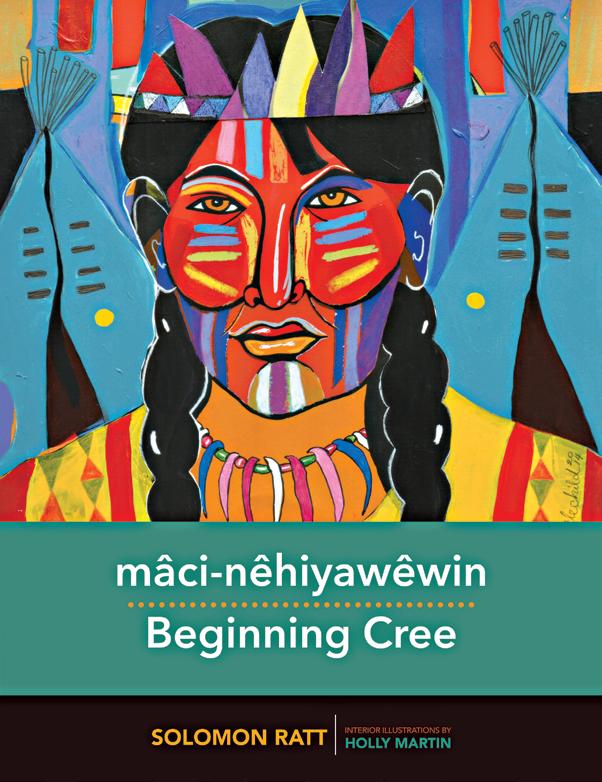
PARTICIPATION MADE POSSIBLE THROUGH CREATIVE SASKATCHEWAN’S MARKET AND EXPORT DEVELOPMENT GRANT PROGRAM.


Schools and organizations across the Cree Nation participated in Pink Shirt Day February 22 to encourage people to stand against bullying and instead express kindness to others. Besides wearing pink shirts, many posted positive messages on social media with the hashtag #eeyoueenoupinkshirtday.

Pink Shirt Day started after high school students in Nova Scotia saw a Grade 9 student being bullied for wearing a pink shirt on the first day of school in 2007. To demonstrate this behaviour was unacceptable, they bought a bunch of pink shirts for others to wear, a movement that soon spread across the school.
Last year, over 110 countries participated in Pink Shirt Day activities with proceeds from shirts sold distributed to youth anti-bullying programs. Bullying is defined as deliberately hurting someone else, often repeatedly, through words or actions. It can take verbal, physical or social forms and increasingly involves cyberbullying to threaten or embarrass someone.
Serious situations have resulted from bullying in Eeyou Istchee, resulting in school closures in some instances. The Cree School Board has organized parent assemblies, discussion groups and activi-
ties to raise awareness about the issue.
This year, classrooms in Voyageur Elementary Memorial School in Mistissini shared pictures demonstrating pink is a sign of hope and spreading reminders to be kind and respectful.
Toronto-based singer Jully Black created a stir with her rendition of “O Canada” at the NBA all-star game in Salt Lake City February 19. While some focused on her soulful performance, her alteration of one word caused a media maelstrom.
In a nod to Indigenous rights after consulting with friends, Black sang the lyr-
ics “our home on Native land” instead of “our home and native land.” While she received a wave of support for her decision, she also received racist hate mail which she quickly called out.
“I didn’t change the anthem, I spoke the truth,” Black told the Brandon Gonez Show. “It wasn’t written correctly, how about that?”
Black said she had quit singing the national anthem years ago with the discovery of unmarked graves in former residential schools. However, when asked to sing at the game, she took a closer look at the lyrics and made what she said was an obvious change.
“I knew this was the biggest stage to sing our anthem,” she said, adding she hoped this would start a conversation for a bigger cultural
shift. “When I sang the word, the emotion, right away tears, hands on heart. If I have an opportunity to help you amplify a voice I’m going to, and so that’s why I made the decision.”
Black’s anthem change drew praise from Indigenous leaders.
“What Jully Black did was she shared her power and her opportunity to give us attention,” said Anishinaabe professor Niigaan Sinclair. “It should be a model for every Canadian. Fundamentally, the national anthem – like the flag, like our laws and policies –has been used to oppress us as Indigenous people and the more that we can challenge that the better.”
Nemaska Band Council Chief Clarence Joly, Deputy Chief Teddy Wapachee and band councillors Edna L. Neeposh, Edna Neeposh and Walter Jolly were all re-elected in local elections February 27. Two new councillors, Kristen Moar Salt and Peter Wapachee, were also elected.

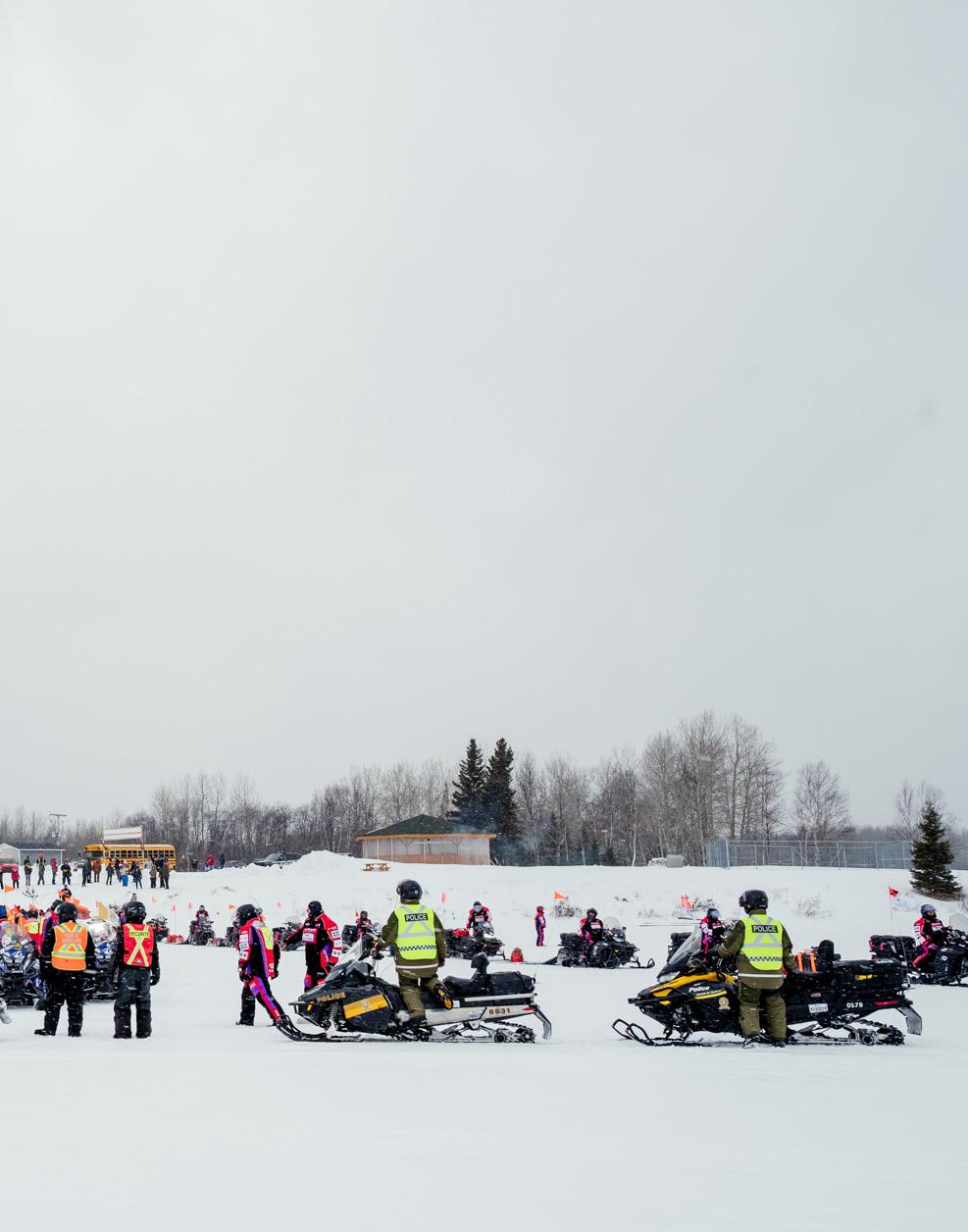
For the second time in three years, 56 First Nations riders and allies traversed a daunting, 4,200km snowmobile route across 16 communities and camps in northern Quebec over 18 days. The First Nations Expedition began February 16 in Manawan, and finished March 4 in Uashat mak Mani-Utenam, passing through the Cree communities of Waskaganish and Chisasibi along the way.
According to the organization’s website, the journey is an effort to “spread the theme of spiritual, social, community and cultural reconciliation.” It is held to honour and raise awareness of missing children from residential schools, missing and murdered Indigenous women
and girls, and Joyce Echequan, from Manawan, whose death in a Quebec hospital highlighted institutional racism across the province and country.
While the first expedition was held in 2021, the 2022 expedition was postponed due to Covid measures. According to co-organizer Derek Jeremy Einish, the plan was to have six riders travel to four communities, but it expanded to 56 riders, who all returned for the second expedition.
The Nation reached Einish in Chisasibi, where the expedition had arrived the previous night after 9pm, much later than their planned arrival, after the pilots had issues with cracked gas tanks.
Einish said the temperatures were around -40 degrees Celsius, but nothing he hadn’t experienced before. For other riders, however, it was their first time dealing with driving in sea ice in extreme cold, which was “very tough on them.”
Arriving in Chisasibi, they were greeted by hundreds of cheering residents. “It was so welcoming,” Einish said, noting they received similar receptions in each community they visited. “It was very motivating in a way that gives you an extra push.”
He said he told the pilots that he hadn’t expected everyone to make it to Chisasibi, the eighth community on the expedition and the end of the northern trajectory before the group headed east

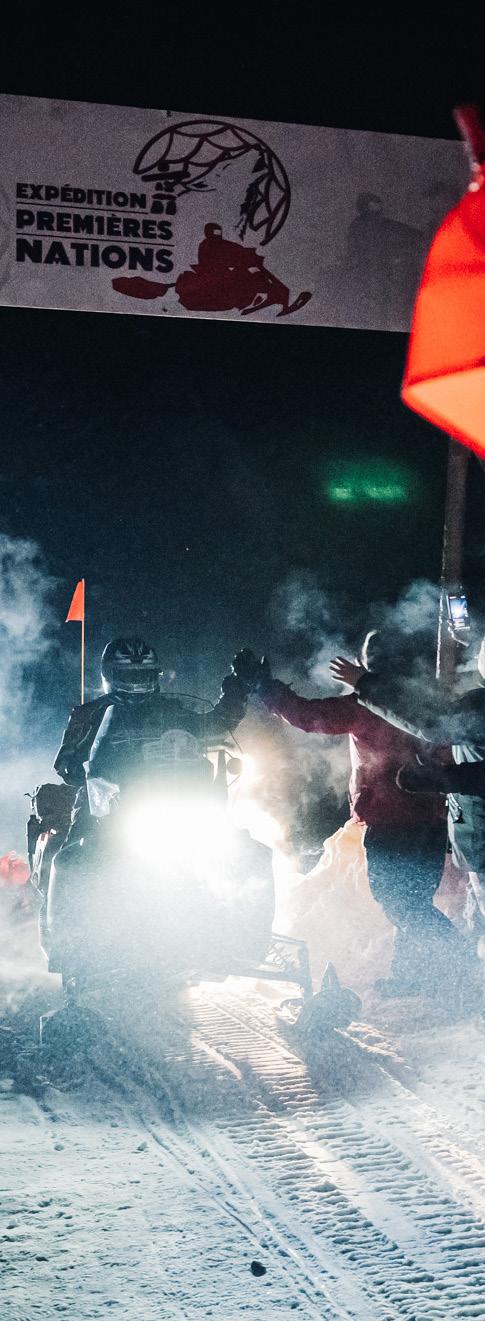
towards Mirage and Matimekosh. “All you guys are still here,” Einish told them. “I was very impressed.”
The biggest challenge, Einish said, was preparing everyone for all the issues that can arise. “You have to be strong, mentally,” he observed, to deal with the challenges the extreme weather and terrain bring.
There were also technical challenges: the day before reaching Chisasibi, one of the riders felt something burning on his snowmobile and managed to get off it before flames erupted. Nobody was hurt, and they managed to save everything on the sled. But the episode highlighted the ever-present risks.

The team adapted to different weather and terrain conditions as they moved from community to community. The participants range in experience from seasoned, moderate and beginner riders, with three groups and three leaders keeping the group together.
Einish explained that having grown up in an isolated community, he is used to planning and executing long-distance expeditions. “But the guys who are inexperienced, we help them out: how to tie sleds, prepare their stuff, prepare how to dress, prepare mentally as well,” he added.
“We’re travelling as a team. If anything is wrong or they feel down, we’re here to help each other out.”
The group travelled with prospector tents and wood stoves, cutting their own wood along the way and cooking their own meals. While the riders hail from mostly First Nations communities, including Chisasibi and Ouje-Bougoumou, there were non-Native riders as well.
“It’s great with the non-Indigenous riders, they’re learning new things. Plus, we’re starting relationships, sharing thoughts and knowledge,” he added. “Everybody, non-Indigenous and Indigenous, is working together.”



May 9 + 10, 2023
Edmonton Convention Centre
Edmonton, AB
Soaring 2023 is back in Edmonton! Taking on a hybrid format for the first time, high school students from across the country will learn about career and post-secondary education options by participating in career workshops either in person or virtually. They’ll also learn more about financial support and meet Canada’s top employers.

Register your group and learn more at indspire.ca/soaring
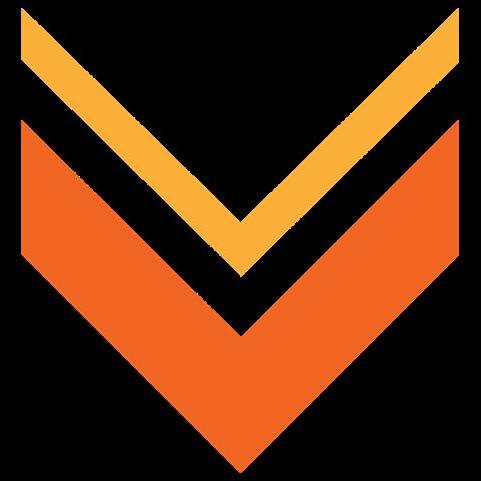
The Indspire Soaring Travel Fund supports students and their chaperones who wish to attend Soaring and who need additional support. Schools will be able to access funds up to $15,000 to help with the cost of accommodation, transportation, meals, and other expenses your group may need.
Through Indspire’s School Grants Fund, schools located in specific communities are eligible to apply for additional grants up to $5,000 to offset travel costs for students and a chaperone to attend Soaring.


If you are interested in accessing these funds, please reach out to communications@indspire.ca.
 Indigenous Youth Empowerment Gathering
Indigenous Youth Empowerment Gathering

Cree fashion designer Scott Wabano took his collection to one of the world’s most prestigious runways at this year’s New York Fashion Week (NYFW) February 10. The semi-annual series in Manhattan is one of the world’s four major fashion events along with Paris, London and Milan.
“It was a life-changing experience I feel I’m still processing,” Wabano told the Nation. “I’m honoured I was able to share it with my friends, family and community members. We really felt the energy in that room and how powerful Indigenous people really are.”
Wabano brought a diverse group of Indigenous leaders and influencers to model his genderless garments, intending to challenge prevailing pan-Indigenous stereotypes. With significant representation from two-spirit communities, another common theme was overcoming binary gender terms.
“The whole premise of my brand is being inclusive, showing how diverse Indigenous communities are and the importance of community,” explained Wabano. “We’re representing not only ourselves but our communities as well. This is something I envisioned as a kid, to see Indigenous models, designers and stories within the industry.”
Born and raised in Moose Cree First Nation, Wabano sought escapism through fashion magazines in his school library. He was curious why he didn’t see Indigenous people in their pages despite being “some of the most innovative people within art.” It fuelled a quest to bring more representation to the industry.
Wabano began planning the brand long before leaving for fashion arts studies in Toronto, inspired by the ubiquity of teepees in Waskaganish where they would often stay with family. Connecting with that community proved particularly meaningful at one pivotal point when they were struggling to feel at home within themselves.
“I went back to Waskaganish and felt like I’d found a place called home that I was really longing for,” Wabano shared. “Community told me no matter where you go Waskaganish is always going to be inside you, you’re always going to take a part of home with you. I fell in love with
that idea. Whenever I think of home, I always think of a teepee.”
Bridging Indigenous traditions with modern styles, Wabano’s stylized teepee logo is often emblazoned on natural or upcycled fabrics to minimize his company’s carbon footprint. He grew up surrounded by his late kokum’s moose hide clothing and making powwow regalia with his mother.
“I get a lot of inspiration from sustainable materials,” said Wabano. “I always believed Indigenous youth are walking in two worlds – the Indigenous traditional world and this western world. My designs reflect that balance.”
After working as an intern and stylist for Anishinaabe designer Lesley Hampton, Wabano made a splash with the launch of his first official collection in 2021. It sold out in two days and led to numerous press and modelling opportunities – the Globe and Mail even named him one of the best-dressed people of 2022.
Wabano has since become an influential social media presence, while working as a stylist or consultant for several media campaigns. Being invited to NYFW was a significant accomplishment, but raising the necessary funds to get there took a community.
“I was going to throw in the towel, but it was community that pushed me to pursue this opportunity,” said Wabano. “It’s very hard for me to ask for help, especially when it comes to financial things. But I decided to bite the bullet and I managed to fund the majority of my fees with sponsorships and crowdfunding.”
In New York, Wabano was accompanied by a powerful group of models reinforcing his core concept that Indigenous people come in all colours, shapes and sizes. Grand Chief Mandy Gull-Masty demonstrated her support for Cree youth by modelling a sleek black design.
“I really appreciate that he’s bringing an important subject forward, looking at two-spirit people with his new association and the clothing is non-gender, non-binary,” said Gull-Masty. “I wanted to be part of that discussion and show my support.”
Other notable models included Swampy Cree activist Michelle Chubb, youth advocate Kairyn Potts and model/ actress Braydee Cardinal, who shared
by Patrick Quinn Local Journalism Initiative Reporteron TikTok how the experience inspired her: “Wow, Indigenous people are quite literally the most resilient, powerful and strong-spirited people.”
For many models, like two-spirit substitute teacher Jazz Moise from tiny La Loche in northern Saskatchewan, it was their first experience on a runway. Moise said it was a surreal thrill that’s inspired new dreams of becoming a stylist or artist in the fashion world.
With a giant billboard promoting the show at Times Square, preparation for the runway was reportedly chaotic but grounded by plenty of laughter backstage.
Wabano’s advice to his models?
“Just be real bad ass,” related Haley Robinson. “Have a good time but also look fierce. You’re meant to be there – we’re here to take up space. I’m like, frig yeah, 100% I can do that. Just walking with Scott and other mixed Indigenous beings was like, we’re here, we f---ing matter.”
As a two-spirit Filipino-Indigenous model and influencer who is passionate about positive representation, Robinson was touched by the pride expressed by Native folks in the crowd who said they could now imagine themselves on stage. It was also revelatory for her burgeoning modelling career to receive advice from those more experienced in the industry.
“They taught me how to feel more comfortable in my walk, look real freaking deadly,” Robinson told the Nation. “We’re living in an age where you’re to celebrate who you are and that’s so powerful. I want to be able to do fashion that doesn’t just put me in a pretty dress.”
After NYFW, Wabano was invited to appear at London Fashion Week in September along with other shows around North America. As he takes a break before preparing his next collection, his mission to prove “as a rez kid you can do anything” is just beginning.
“I always tell people to go for it, whatever you may dream,” said Wabano. “Don’t be afraid to ask for help from communities, family and friends. Indigenous youth are some of the most powerful youth I know – it’s important to tap into that power and create big change.”

Hundreds of riders, crew, family, friends and fans gathered outside Chibougamau February 25 for the fabled Festival Folifrets, which, in its 56th year, is of one of the longest-running snowmobile competitions in the country.

By 8:30 a.m., the first riders and pit teams had arrived, getting ready to take on the 220km course in the professional class. By 9:30, the pit crews had assembled to receive instructions on the rules, punches, route and emergency procedures in both official languages.
The 104 riders gathered at the starting line in groups of four, ready to start racing at one-minute intervals. The pro route consisted of four laps of the 55km route along snowmobile paths, lakes, logging roads, and alongside the Route du Nord. Semi-pro racers completed three laps, the participation group two, and women one.
At 10:10, the first group of pro riders took off. Mistissini’s Silas Neeposh left a minute later, followed by his brother Zechariah Neeposh and finally Sylvain Ménard at 10:14. Over the next few hours, they would battle it out for the top three spots.
Seen from one of the three helicopters arranged by race organizers, the machines wound their way through a series of technical turns and jumps at the start of the course. They then crossed into bush and over frozen lakes, before emerging to the highway where dozens of onlookers cooked food and
cheered on the racers on with improvised signs. Another turn took them back into the bush, before they returned to the finish line.
Going into the fourth and final lap, Silas was leading the pack, a position he’d grown comfortable with over the past years. Not long after, however, officials announced that Silas’ machine had broken down, and he would not complete the race.
Silas’ father and pit-crew member David Neeposh said that his son’s machine had been pulling to the left as early as the first lap, and he suspected that the steering had finally given way. After the race, Silas posted, “I was running good and leading the race until that darn tree moved AGAIN!”
At 1:26 p.m., Zechariah was the first to cross the finish line, but his win wasn’t guaranteed – if Ménard, as the second starter, crossed within a minute, he would take the win. A crowd of family and friends gathered around Zechariah, counting down the seconds.
Just then, Ménard appeared over the hill for the last series of turns before the flag. The crowd continued to count in anticipation until they reached one minute and erupted in cheers. Ménard
would cross the finish line 20 seconds later.
“I feel great,” Zechariah said after the race, noting it was his first win here as a pro and his second time finishing Folifrets. His previous podium finish was second place in semi-pro. “It was rough. There were too many racers,” he said. As for his victory plans? “Eat poutine,” he laughed.
Zechariah’s first place winnings totalled $6,000, while second-place finisher Ménard won $3,000 and François Paré garnered $2,000 for third. In the semi-pro category, Kent Careen took first place for $3,200, Pascal Marceau won $1,800 and Jeremy Jolly, $1,200.
Dawson Petawabano won the participation category, followed by Martin Metabie and Caleb Blacksmith. In the women’s category, Destiny Coon-Come of Mistissini took first, followed by Sarah Neeposh and Jewel Neeposh.
Coon-Come said she wasn’t surprised by her win, her first victory at Folifret. She found the course a bit rough, while the field included a “lot of fast women.”
Coon-Come said she’d celebrate her win by getting some sleep, before preparing for upcoming races – including
one in Ouje-Bougoumou the following weekend.
The festivities continued at the Chibougamau golf course hall in the evening, where awards and prizes were handed out by organizers and sponsors to an overflowing room. However, the crowd was in for one final surprise, when Ménard, after accepting his award, delivered a marriage proposal to his girlfriend – which she accepted. Zechariah joined the celebration by offering one of his two champagne bottles to the happy couple.
Festival president Serge Audet said that he began as a racer in many competitions across Canada and the United States. “Back then, there were a lot of volunteers. I saw there was a lot of work being done and to help I became a volunteer,” he explained.
“Another reason is, I was used to getting around on snowmobiles and knew what kind of race the racers wanted. So I arranged the course as correctly as possible, so the racers appreciate the course,” he added.

Audet said that 15 to 20 years ago, the course was made up of 80% Jamesian participants, but then people began coming from Ouje-Bougoumou, Mistissini, Waswanipi and Nemaska, and the race has grown to become about 80% Cree. “One thing we have in common is snowmobiling,” interjected the festival’s security coordinator Luc Michaud.
For Audet though, the main joy of the festival comes from people coming together to enjoy the event. “I see the people coming around, joining in, having a nice race that’s safe, and I can see the collaboration between the different communities and Chibougamau,” he said.
That level of organization doesn’t come easily. After the festival finishes in March with the “President’s Stroll” – a relaxed event for antique snowmobiles – they close the festival in May before organizing begins again in September or October.
The biggest challenge is assembling a team of 40-50 volunteers who
can commit to supporting the festival. Another concern is getting sponsors for the non-profit festival. “We need sponsors and involvement to make it succeed. We can’t succeed without them,” Michaud added.
Organizers say they received requests that more of the race be conducted along the highway, but that Quebec’s Transportation Ministry must
approve the routes and are reluctant to interrupt traffic for roadside fans.
Still, they have bigger goals, including collaborating with other races across Eeyou Istchee to create an integrated circuit. Said Audet: “If all the communities work on it, with the same rules and point systems, you can have a winner for the whole territory.”


Cree musicians took centre stage in Montreal February 12 when Steve Einish opened for G-Unit rap star Tony Yayo at the Belmont nightclub in a show co-promoted by his event-planning company Nomad Entertainment.

While Yayo was incarcerated in the early 2000s when his lifelong friend 50 Cent was blowing up, he was reinvigorated by seeing Eminem wearing a “Free Yayo” shirt at the Grammys. Yayo’s debut album reached number two on the Billboard charts in 2005 and his buzz has seen a noticeable resurgence in the past year.
“It was mindblowing, the show I just did,” said Einish. “Growing up as a kid in my generation, you’d see every kid wearing something affiliated with G-Unit. [Yayo] is the OG of the group. To be recognized as a good enough artist to open up for that show was just f---ing special.”
After hearing about Yayo’s cross-Canada tour in December, Einish was asked by his colleague, pioneering hip-hop promoter Rickey D, if he’d be interested in partnering with him. Having the opportunity to showcase his own music, released under the alias KONG, was the icing on the cake.
“When I met Tony, right away he locked eyes on me,” Einish told the Nation. “He knew I was Native. He asked, ‘Yo, what tribe are you?’ I said
I’m from the Cree Nation in Northern Quebec. He started flipping out – it’s his first tour across Canada, meeting pure Natives in every city.”
Einish said the Cree Nation was well represented in the crowd of about 250. With funding from the Cree Native Arts & Crafts Association (CNACA), Einish recorded his set for a promotional video that will help him apply to future festivals and showcases. He sees it as another step on the long road to artistic success.
“I don’t want to ever have that mentality like I’ve made it,” said Einish. “It’s cool we did a great show, but I’ve got to keep building my business and creating this legacy that’s going to last for decades. Stay humble, stay positive and do it for the love.”
Originally from Whapmagoostui, the Cree/Naskapi music producer now divides his time between Chisasibi, Wemindji and Montreal. After studying at Recording Arts Canada in Montreal, Einish worked briefly with CBC North but had his sights on emerging opportunities in the music industry.
Funding from the Wemindji band council helped him launch Nomad Entertainment in 2018 while managing Naskapi rappers Violent Ground. A burgeoning relationship with Rickey D helped secure them an opening slot on a small tour by a group signed to Wu-Tang Records.
While the Covid pandemic threatened to derail his music career, restrictions eased enough in 2021 for Nomad to present the “Empowwowment” event in Whapmagoostui, featuring the NorthStars, Miigwin, Slice and Cjay Griz. With strict Covid isolation protocols preventing outside artists from entering the territory, Einish was forced to focus locally.
“I only started working with Nomad Entertainment since the pandemic,” said Christian-John Monias, better known as Cjay Griz. “Since he was staying in the Cree Nation, he started connecting with me and other local artists to keep Nomad going. It worked out and since then I’ve done most of his shows.”
Monias has developed a fruitful collaboration with Einish, producing many

If you are
of his recent beats, alongside working with other rising Cree stars like Siibii and Slice. He also features on the mic in new video “Come Thru” with blind Oji-Cree artist Mattmac, who has been racking up millions of TikTok views lately with hit song “Rez”.
“I’m seeing it reach places I’ve never had my other music reach,” Monias said of the Mattmac collaboration. “We made that track in 2019, shot it last summer in Winnipeg and waited to release it at a good moment. It’s nurturing the scene we already have here, elevating ourselves.”
The Chisasibi-based producer and rapper has recently been trying his hand at stand-up comedy while keeping busy with multiple projects, including a follow-up to his 2021 release with BC artist EarthChild. Whereas a decade ago the Cree music scene was almost non-existent, Monias feels a new generation of confident artists are ready to take on the world.
“We want to grow here where we live,” asserted Monias. “We don’t need to live in Montreal or another city – there are a lot of resources now to make that happen. It feels good that people are starting to recognize it. I feel we’re making something out of nothing here.”

As their success reaches new regions, Einish and Monias are leveraging their growing network to bring great events to the North. Einish is working with promoter Robbie G for the Montreal stop on a cross-country tour by former Swollen Members rapper Madchild, who he’s bringing to Eeyou Istchee in May.

“Steve is starting to rub shoulders with all these people, getting ideas about bringing them up here,” Monias said. “We have a great relationship where we’re trying to help build each other up. If he can bring big artists here and have locals perform, it’s a great platform to showcase our music alongside these big names.”
Cjay Griz has been tapped to open the Madchild shows in Chisasibi on May 15 and Wemidji on May 16, which are already generating excitement in the communities. As with every opportunity, Einish knows these shows will lead to further possibilities that connect Cree artists and music lovers to the worldwide scene.
“We’re doing it right after Goose Break, giving youth that motivation for coming back to school and kicking off their summer,” explained Einish. “Not only am I taking it as a token of giving back to my community, but I’m starting something great that can be built upon, another market for this music industry.”
While it may be hard to notice when these music producers transitioned from writing songs in their bedrooms to working with established stars, they encourage anyone hungry enough to pursue their dreams to take that leap of faith.
“Go after that dream because you don’t want to wake up one day in your 60s or 70s and have that regret of what you could have done if you’d pushed it 100%,” said Einish. “No matter what you do, make sure you do it out of love.”
If you need



In 2020, the Cree School Board embarked on a project to document stories, teachings and legends held by traditional knowledge keepers across the nine Cree communities. Finally, after delays brought about by the Covid pandemic, the CSB released 42 videotaped interviews in a series of events held across Eeyou Istchee.
The Traditional Knowledge Keepers project was overseen by the Cree Programs department within the CSB and involved interviewing two to seven Elders per community, producing videos between eight and 44 minutes in length. Starting February 6 in Wemindji, the team held events showcasing the contributions of Elders from each community.
The team managed to visit every community except Nemaska and Whapmagoostui, with events in those communities planned for March 6 and March 30, respectively. So far, each event attracted 150-200 community
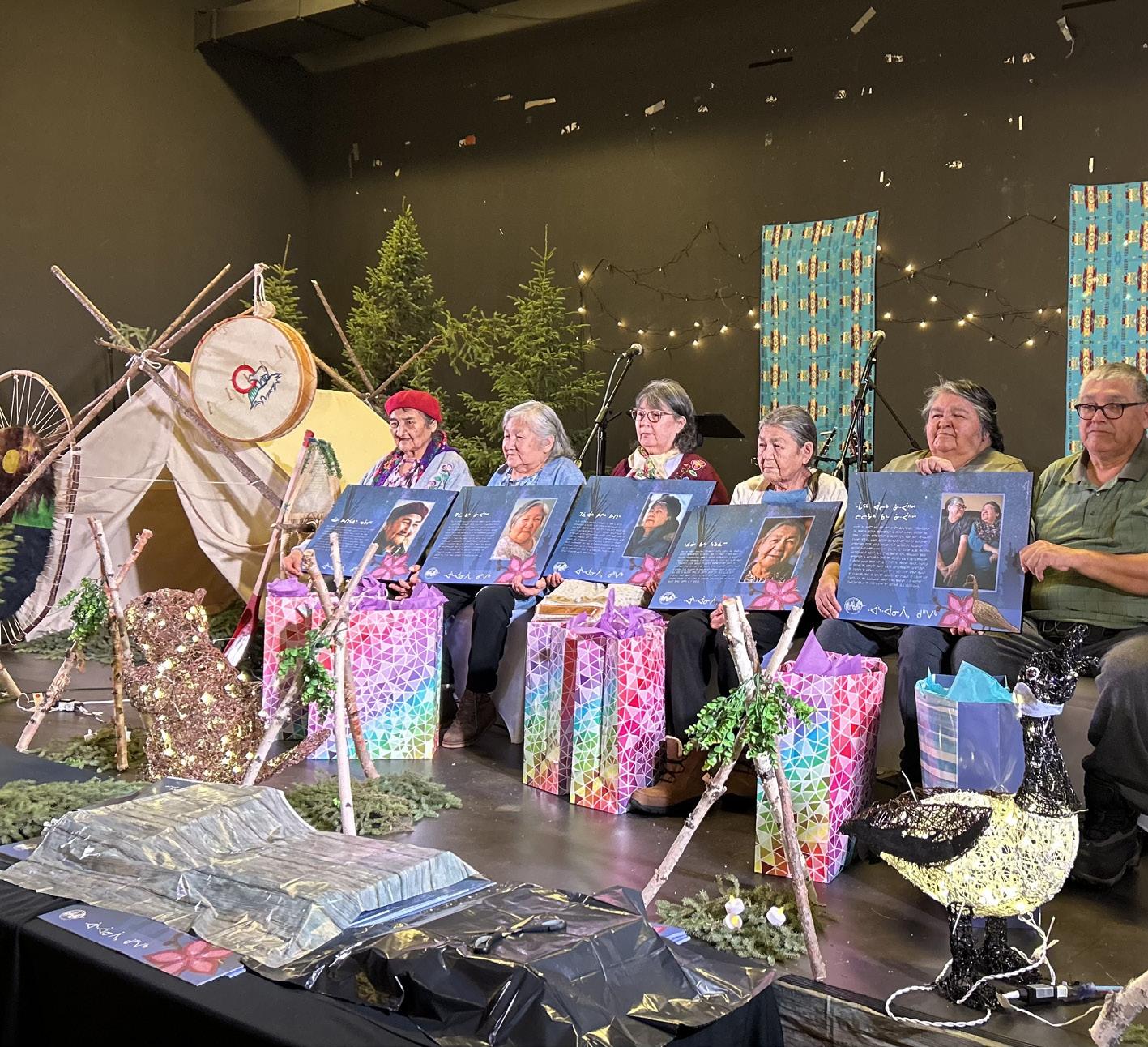
members, with invites extended to the Elders and their families, chiefs and deputy chiefs, school committees, principals and teachers.
Cree Programs Coordinator Theresa Kakabat-Georgekish said the project aims to revive the “old vocabulary.” Videos feature snowshoe-making and basket-making skills as well as the uses of different trees: their names, what kinds of medicines or tools can be harvested from them, or what kinds of firewood they provide.
“It’s an effort to maintain and bring in especially the language that’s not being used daily, like the old ways of saying things, what the Elders were used to, using the terms from a long time ago.
“The language is very rich when you’re out on the land,” she explained.
“These videos will be part of the schools for a long time,” she added, noting that the videos will be available on the CSB website after March 6. While the videos are in Cree, they include English subtitles.
Kakabat-Georgekish said they created a lesson plan with three different groups in mind – elementary, high school and Cree language and culture teachers. She hopes to repeat the project soon.
The CSB created a series of posters featuring Elders with bios and quotes from their interviews which were presented to their families as well as teachers. Eventually, the team hopes to publish a book and other material to accompany the videos.
“It was a humbling experience to see the reactions of the people,” Kakabat-Georgekish said of the community events. “They were so proud that they can have access to something so rich and empowering. They didn’t just give us their knowledge and their teachings, their love came with it, too.”
“It was a humbling experience to see the reactions of the people”
- Theresa Kakabat-Georgekish


Here’s another edition of the Nation’s puzzle page. Try your hand at Sudoku or Str8ts or our Crossword, or better yet, solve all three and send us a photo!* As always, the answers from last issue are here for you to check your work. Happy hunting.
Previous solution - Medium
4
6 How to beat Str8ts –Like Sudoku, no single number can repeat in any row or column. But... rows and columns are divided by black squares into compartments. These need to be filled in with numbers that complete a ‘straight’. A straight is a set of numbers with no gaps but can be in any order, eg [4,2,3,5]. Clues in black cells remove that number as an option in that row and column, and are not part of any straight. Glance at the solution to see how ‘straights’ are formed.
To complete Sudoku, fill the board by entering numbers 1 to 9 such that each row, column and 3x3 box contains every number uniquely.
For many strategies, hints and tips, visit www.sudokuwiki.org
If you like Str8ts check out our books, iPhone/iPad Apps and much more on our store. The solutions will be published here in the next issue.
ingo has been a Cree tradition since the 1950s, completing its conquest of Eeyou Istchee only 30-odd years after its invention in the US, where churches and charity groups would play for low stakes.
Where can you pick up a fresh copy
In some Native communities down south, many of those casinos with gaudy neon lights that are visible for miles around began long ago as humble bingo halls. For instance, the Seminole gambling palaces in Florida started off as tiny bingo trailers. Today, they are one of the wealthiest tribes in the world – they purchased the Hard Rock Café restaurant-bar-slash-museum empire in the early 1990s for $1 billion.
Let’s cheer these amazing businesses listed below… Nation is available there! –

To this day, at many casinos in Oklahoma, hidden away from view usually, will be a tiny hall reserved for bingo. Now, however, they are quiet and almost empty save for a few elderly ladies squinting at their bingo cards.
Bingo in Rupert House started sometime in the 1950s at the now long-gone J.S.C. Watt Memorial Hall at the end of town. Mrs. Maude Watt’s bingo games offered baked goods and merchandise as prizes.
One evening Roderick W. won a pair of bloomers and waved them around to everyone’s laughter. On another game night an elderly man coughed too hard and blew the paper markers off his soonto-be-winning card. Several young boys tried to help him replace the markers but abandoned him when the game continued.
Gambling has always been big in the Cree world. So much so that a Creenglish word – jackheejanuu – was coined for at least three games where money was involved


to say that bingo nights back then were small, fun, communal affairs until radio appeared.
I spent quite a bit of time in Whapmagoostui-Kuujuaraapik several years ago. There was a bingo game almost every single night. It was not a case of bingomania as I believed it to be.
There are two radio stations in town and the Cree and Inuit would take turns broadcasting their games. I would call a friend to chat and after a few seconds I would hear his wife in the background ordering him to stay off the line. I imagine many players had both radio stations on speed dial before the age of cellular phones.
The bingo prizes in Great Whale can be quite grand. One can win several thousand dollars, a speedy snowmobile, an ATV, even a shiny new car!
cards or a pair of dice in their pockets when we were young.
Then there was the coin toss, which combined skill and chance. A short stick was stuck into the ground and made smooth and flat. The object was to land coins as close to the stick as possible. Whoever’s coin landed the closest would gather the coins. Depending on whether “shaking” or “taking” was called, they would take the ones that landed heads up, or cup the coins, shake them down and take the one he called would land heads or tails up. There was no way to cheat at this game. It was all in the wrist.
819-978-3656
Which brings us, finally, to a recent incident at a radio station close to you. There was yet another bingo game one night with a meagre pot of $3,000. A gentleman called the station claiming to have the winning number. The card was verified, and he was awarded the cash.
Not long after, someone noticed the 3 on the number 23 had been not too cleverly altered to read 8. The jig was up.
T: 819-895-2727
According to George, who claims to have been an infrequent player, things were not always on the up and up at Mrs. Watt’s games. The same group of women always seemed to be the one who would shout BINGO! He called bingo once and Mrs. Watt checked his winning card only to declare it invalid. Sure enough, one of Watt’s ladies had the winning card after several more numbers were called.
It’s not that easy to cheat at bingo, as we will see later in our story. Suffice it
Bingo can be an expensive affair in an isolated community like Whapmagoostui. The boxes and boxes of cards must be flown in by air cargo after all. Still, on cold winter nights, people bundle up and head to the radio station, cash in hand, dreaming of hitting the jackpot.
Gambling has always been big in the Cree world. So much so that a Creenglish word – jackheejanuu – was coined for at least three games where money was involved, those being the checkers, poker and craps that were constantly played down by the river in Rupert House. It seemed almost everyone had a deck of
Angry bingo players took to social media to rant and rave. Some blamed the radio station, others called for the culprit’s head. The police were soon involved. Rumours flew back and forth. Accusations of fraud were heard. Fisticuffs were reported.
In the end, the money was returned unspent, and no charges were laid. But there was to be no happy ending. As of now, all bingo games have been suspended until further notice.
418-745-3211
The cultural force of bingo is stronger than ever
The voice on the radio drones on with another bingo number. I’m not sure how many numbers have been called or how many are left to call out, when we hear the voice declaring someone had won on the previous number.

Aarrgg! I toss my unlucky dabber into the big pile of used-only-once game dabbers. It’s a good thing I only play when the jackpot is too big for people to handle. They need a big spender like me around, if only I could finally win.
A few minutes pass by on air and then we hear a golden oldie, as the kids call it, written and performed in the long-ago year of 2012.
I realize that my taste in music has now retreated to an ancient era when lyrics and words were considered important. When having to repeat the same thing more than twice was blasphemy and considered lazy songwriting. The bassist’s beat was just to help stir things up, joined by an occasional guitar riff.

Life and music were simple yet complicated, as songs had to be written in some sort of secret code that didn’t offend strict laws of free speech. Not an ass was bare, and the excitement at live concerts came from spectacular fireworks.
Finally, the announcer returns with the promise of easy winnings and a lifetime of richness. If only the prices would go down long enough so that any windfall wouldn’t disappear into a few bags of groceries. The voice drones on, another winner is called out and the game continues into the silent night, where nothing stirs but the dabbing hands.
Anyway, trying to get to a topic that affects us all and trying to make anyone laugh about it isn’t as hard as it appears. I lose again and laugh out loud – maybe the next generation will have better luck than I do at games of chance.
The only real gamble, which is more than a sure bet, is the time spent on moulding a young mind into a razor-sharp calculating machine during years of schooling. Yes, betting on our youth is a wiser use of our funds and time. One
day, when all the money is used up, the fact that there will be good memories is comforting and good to look forward to. Food on the table and a bed to sleep on are necessities in life. But the mind and soul need nourishment too, so invest in your children wisely. Remember, money only solves money problems.
As I line up with a few other winners to collect the prize I just won at the local radio station, I think of how much I spent to get to this point. Gladly, it isn’t much for me and the winnings make it all good again. Forgetting about the losses is easier now.
The familiar game, with thousands of followers in our lands, brings everyone
together, mainly to compete against each other and take their money and put it in your pocket. But no one seems to mind. The fun of winning keeps the spirit alive.
One day, hopefully the next game, I will return to collect more winnings. I only wish the games would be shorter and more infrequent, making available more valuable family time. For instance, so I can remember that cute baby’s face. Suddenly that cute little child is three years old, and we didn’t notice until it started speaking to us, asking for our attention again. Yes, time goes by too fast to ignore the real world around us.



